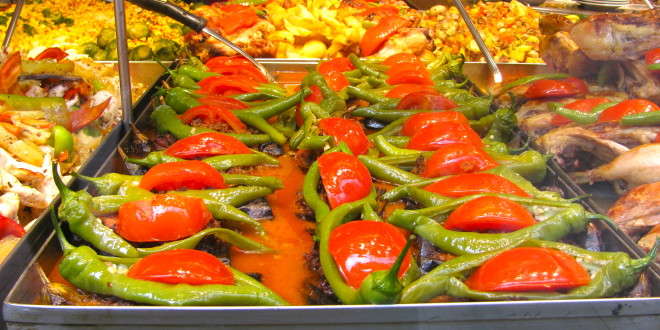Can I do it? Can I reach up and take the piping hot bowl of vegetables that my Turkish colleagues are helping themselves to? And then can I sit down and eat them?
Now, as your faithful Turkey blog writer, I feel a firm obligation to once again permit cooked vegetables to pass my lips. Why? Because they are wildly popular in this foodie culture.
My coworker is telling me that the bowl consists mostly of leeks. I see white and pale green, with pieces of orange (carrots), and taking a deep breath, I grab hold of the bowl and place it on my tray.
I began my career as a nutritionist, and still notice food habits. I had little idea what to expect when we moved a year ago . . except worrying that Turkish food might resemble Greek-American cuisine, with its odiferous “feta” cheese (it emphatically does not, to my relief). What I got instead was a complex colorful, vegetable-infused cuisine with Ottoman, European and Arab influences.
The traditional Turkish breakfast is composed of fresh tomato chunks, often peeled, cucumber slices, green and black olives, slices of mild white cheese, fresh bread, and honey or jams – homemade and bursting with flavor.
Lunch is often a bigger meal than dinner—and with workday lunches free of charge people, especially single young men, really load up—but the foods can be the same. Soup, near and dear to the Turkish heart, the most popular a mix of red lentils, onions, chicken broth, spices and nane, dried mint leaves. Some kind of meat: often lamb, but perhaps beef or chicken pieces cooked in sauce with onions and tomatoes and thyme, ground into meatballs or grilled with peppers. Rice, sauteed in butter first, then put to boil. . . the results are plump, shiny and flavorful. And then vegetables: fresh parsley, carrots, cucumbers, lettuce, tomatoes and cabbage in salads, or peas, potatoes, green and red peppers, eggplant, carrots, leeks, green beans and cauliflower cooked and served hot or cold.
For almost a year, I have bypassed these vegetables, unable to get the Libby’s can out of my mind. Then last August in Minnesota I read a New York Times article by John Willoughby titled, “Braising Vegetables, a Turkish Delight.” In it he described facing a dish of green beans that had been “cooked to death,” then served at room temperature. To his surprise, they were delicious:
Willoughby went on to say that the beans had been gently braised in olive oil, then cooled, topped with an herb or citrus juice, and served at room temperature “when their flavors are at their fullest.” He remarked that the taste was like that of an entirely new type of vegetable, “plush and full-flavored but still somehow delicate. . .”
I sit down with my colleagues and face my large, juicy bowl. The leeks look like celery until I fork into them and see them draw apart in layers. As we eat, my fellow teachers tell me about them, mildly dissing the cafeteria. “They’re cooked in some kind of oil, but olive oil would be better.” And, “The only seasoning is salt and pepper, but a little bit of tomato paste and some lemon juice would make them really delicious.” Everybody cleans their plates.
I eat most of it, not quite cleaning my plate, but I’m proud of myself. Next, I think I’ll try turlu, a braised multi-vegetable dish that has been compared to Provencal ratatouille. I’ll let you know how it goes. In the meantime, here are links to two excellent Turkish food blogs written by friends here:
One thought on “Desperate Vegetables”
Comments are closed.





Awesome post Mom! I was going to say, “but you eat stir-fried vegetables at home!” but you covered that one, and it’s a different category. So many good points here I really can’t name all of them.